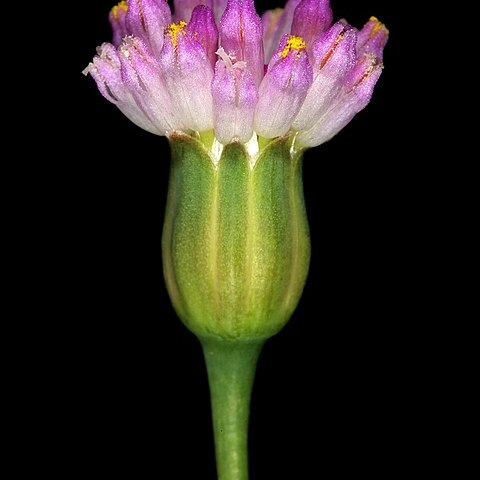A bushy annual herb up to 45 cm high, stems woody, leafy. Leaves crowded, up to 6 x 1.5 cm, oblong to elliptic, apex subacute, base broad, clasping, margins entire, slightly fleshy, glaucous or pale green, very thinly cobwebbed at first, later glabrous or nearly so. Heads discoid, solitary on very long (up to 20 cm) nude peduncles in the upper leaf axils. Involucre campanulate, bracts 6-7, oblong, subacute, 5-6.5 mm long, reaching to the base of the campanulate part of the flowers, glabrous, calyculus wanting. Flowers lilac, style branches truncate, penicillate, with a short tail. Achenes 4 mm long, cylindric, S-angled, blackish with white clavate hairs along the angles, becoming mucilaginous when wet, pappus caducous.
Annual herb, up to 450 mm tall. Leaves oblong to elliptic, base broad, clasping, margins entire; slightly fleshy; thinly cobwebby at first, glabrescent. Heads solitary, discoid; involucral bracts 6 or 7, 5.0-6.5 mm long. Achenes with white clavate hairs on angles. Flowers pink to lilac.

